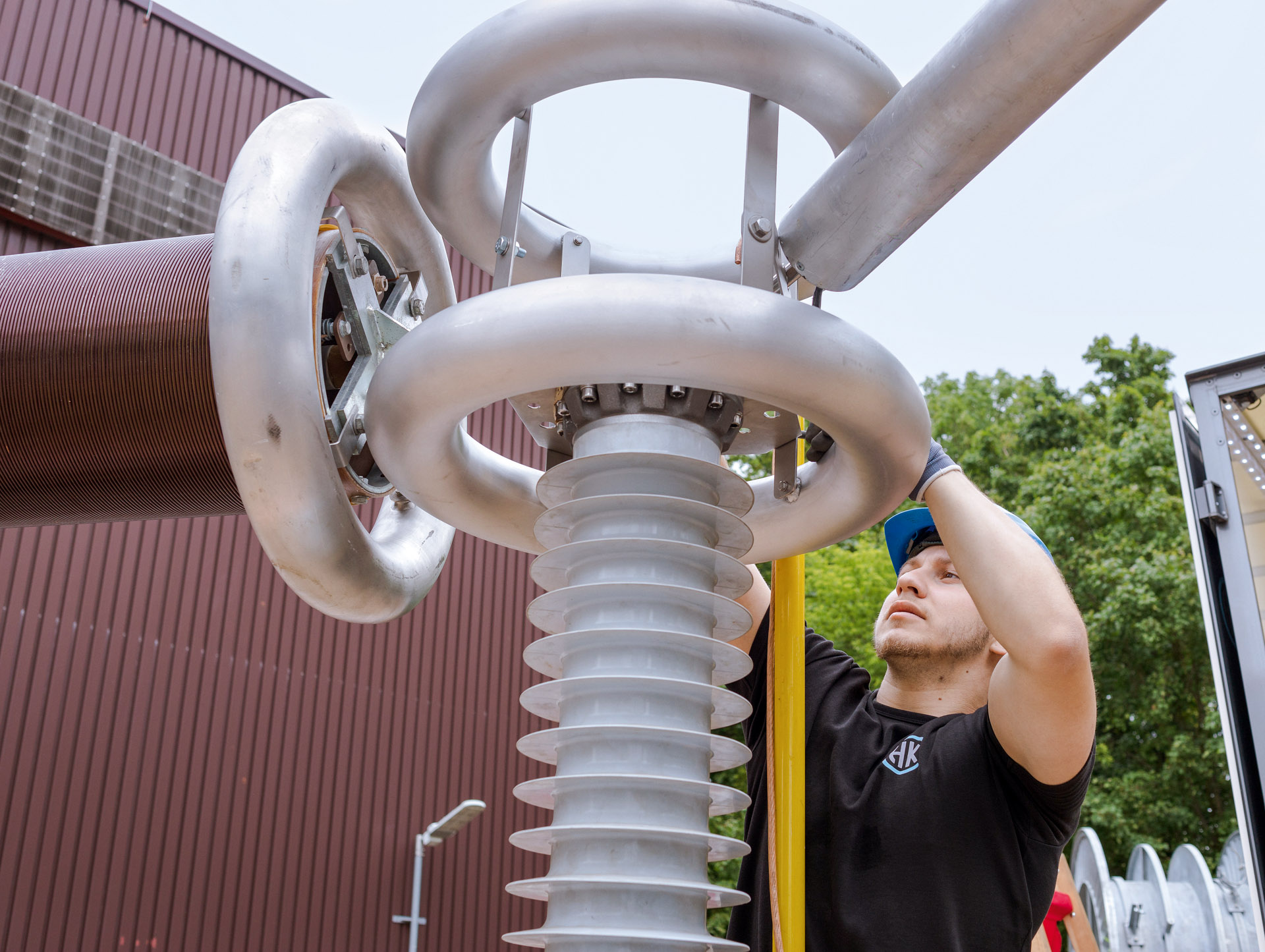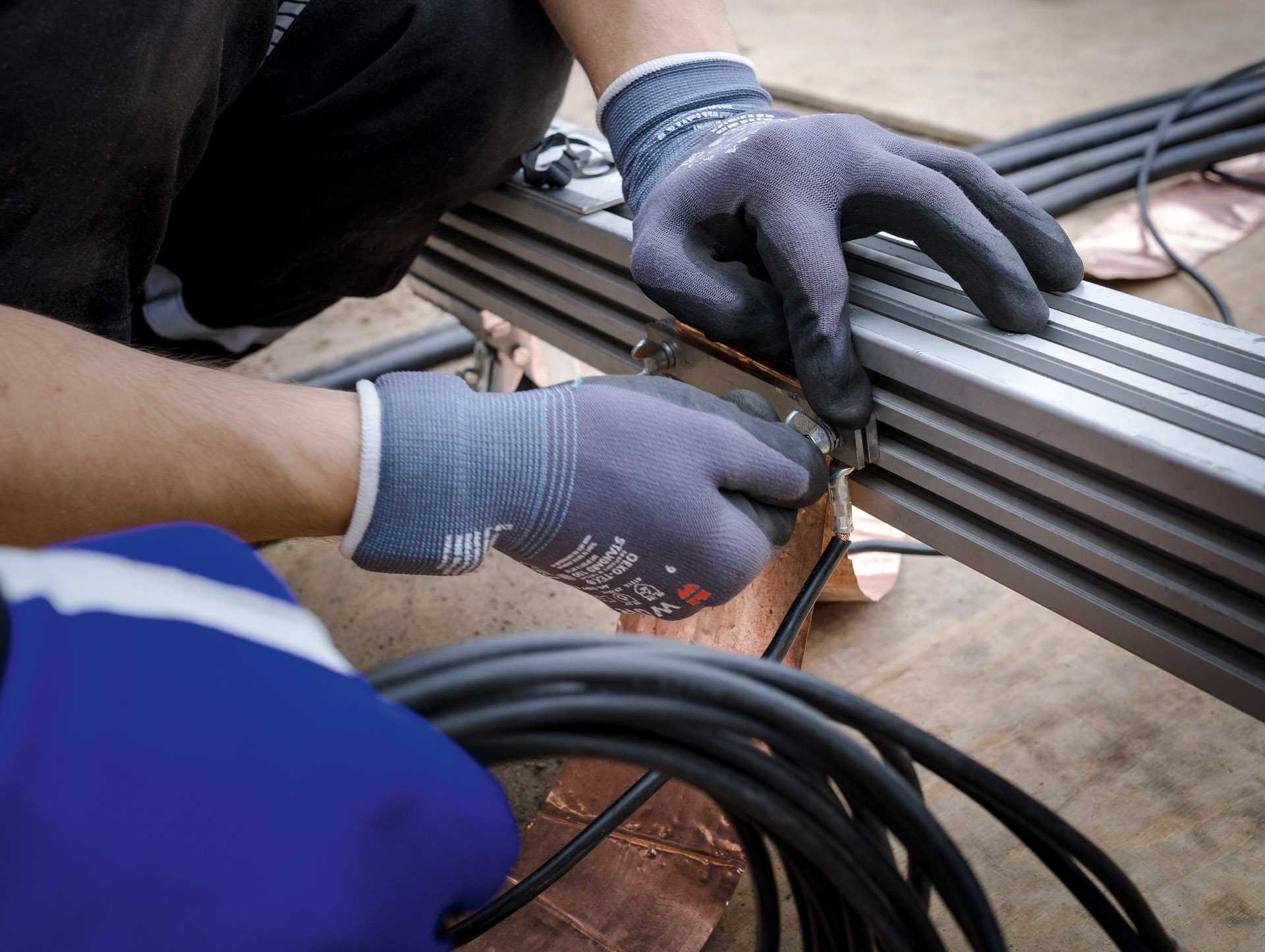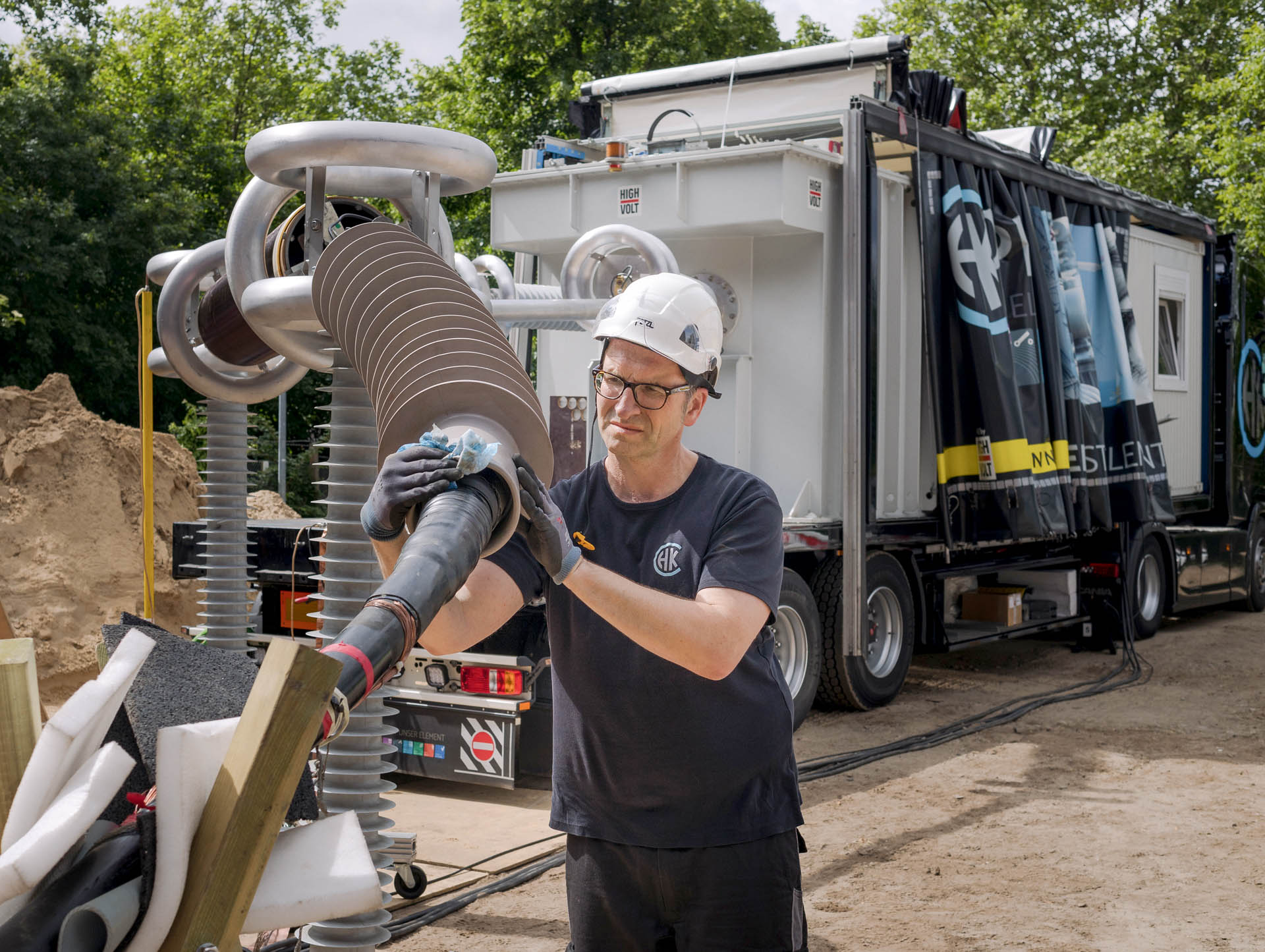Repairs to cable systems cost time and money. Therefore, a HIGHVOLT high-voltage test is carried out directly after final assembly.
The load on cable systems in Germany is constantly increasing. Repairs to cable systems are associated with high cost and time factors. In order to control proper cable production and assembly after installation, a standard-compliant, high-voltage test is therefore carried out after final assembly.
In the course of maintenance and network expansion, high-performance power engineering components are upgraded and new ones are built. At the Lichterfelde combined heat and power plant in Berlin, the grid connection is realized by means of 110 kV cable systems. The network operator Stromnetz Berlin wants to expand its infrastructure in order to be able to reliably supply the German capital with electrical energy in the future. In doing so, grid operators in Germany are fundamentally faced with a major challenge: the grid must both supply the growing demand for electricity as well as integrate the volatile decentralized energy producers in a stable manner. The increase in networking required as a result necessitates an increase in the number of buried high-voltage cable connections.
During laying, damage to the sheath and the main insulation as well as quality defects in the installation of fittings can occur. These can manifest themselves in partial discharges and lead to a failure of the cable section or an entire substation during operation. Such a failure can interrupt the power supply of an entire region. Damage remediation in the form of cable fault location as well as repair and construction measures are time-consuming and cost-intensive for network operators. In addition, damage events can jeopardize grid stability. Therefore, high-voltage tests with optional accompanying partial discharge measurement after cable laying are an investment in quality assurance.
“For network operators, it becomes expensive when laid cables fail and power failures are the result. With HIGHVOLT’s testing system, we can prevent this scenario and test cables reliably and directly on site.” Alexander Lüpschen, KOOPMANN Company
With the HIGHVOLT resonance test system, engineers of the Koopmann Group have a modern and mobile technology at their disposal to test and diagnose cable systems on site. The core component of the system is a 23-ton resonance reactor, which is powered by state-of-the-art converter and control technology as well as an exciter transformer. The test circuit is rounded off with an additional high-voltage measuring divider, partial discharge coupler and reverse impedance.
“Testing high-voltage cables after they have been laid is essential to check whether the cable and the necessary connection sleeves are functioning properly. With our perfected technology of frequency-variable resonance test circuits, this can be realized in an uncomplicated way.“ Dr. Alexander Winter, HIGHVOLT
Info
Even if a high-voltage cable has been successfully tested and laid on site, the insulation can suffer damage over the years. With the HiMON® monitoring system from HIGHVOLT, however, it is possible to keep a permanent eye on kilometer-long stretches of underground cable and to generate damage forecasts thanks to artificial intelligence.

YOUR CONTACT
Do you have any questions about the project?
Dr. Alexander Winter is there for you:
A.Winter@highvolt.com







